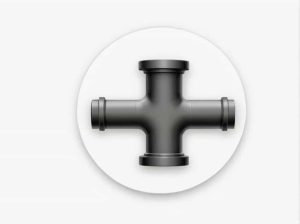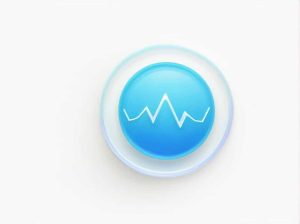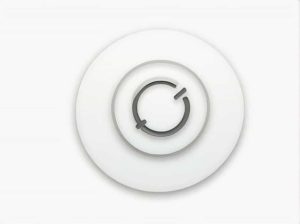A 33/11kV substation is a crucial part of the electrical distribution network. It steps down the voltage from 33kV to 11kV making it suitable for local distribution. The single line diagram (SLD) represents the electrical layout of the substation using standard symbols.
In this topic we will discuss the working principle key components and the significance of a single line diagram in a 33/11kV substation.
What Is a Single Line Diagram (SLD)?
Definition
A single line diagram (SLD) is a simplified electrical representation of a power system where one line represents multiple conductors. It helps engineers and operators understand power flow connections and control mechanisms in a substation.
Purpose of SLD in Substations
- Visual representation of power flow
- Simplifies complex electrical systems
- Helps in system analysis maintenance and fault detection
Understanding a 33/11kV Substation
Function of a 33/11kV Substation
- Steps down 33kV transmission voltage to 11kV for local distribution.
- Ensures stable voltage regulation for industrial and residential areas.
- Provides protection switching and control of electrical power.
Basic Components of a 33/11kV Substation
A 33/11kV substation consists of various switchgear transformers and protection devices. The main components include:
| Component | Function |
|---|---|
| Incoming Feeder (33kV) | Receives power from the transmission network. |
| Circuit Breakers (33kV & 11kV) | Protects against overcurrent and faults. |
| Power Transformer (33/11kV) | Steps down the voltage from 33kV to 11kV. |
| Lightning Arresters | Protects equipment from high voltage surges. |
| Busbars (33kV & 11kV) | Distributes power to multiple feeders. |
| Current and Potential Transformers | Measures current and voltage for protection and metering. |
| Isolators & Earth Switches | Allows safe maintenance by disconnecting equipment. |
| 11kV Outgoing Feeders | Distribute power to local transformers and industries. |
Single Line Diagram (SLD) of a 33/11kV Substation
Basic Layout of SLD
The SLD of a 33/11kV substation typically consists of:
- 33kV incoming line from the transmission network.
- Lightning arresters and isolators for protection.
- 33kV busbar to distribute power.
- Circuit breakers for safety and control.
- Power transformer (33/11kV) to step down voltage.
- 11kV busbar for secondary distribution.
- Outgoing 11kV feeders to different load centers.
Step-by-Step Power Flow in SLD
- Power enters the substation at 33kV from the grid.
- Lightning arresters and circuit breakers protect against surges and faults.
- The 33kV busbar distributes power to the transformer.
- The power transformer converts 33kV to 11kV.
- The 11kV busbar distributes power to multiple feeders.
- Outgoing 11kV feeders supply electricity to industries and local substations.
Key Equipment in the SLD of a 33/11kV Substation
1. Power Transformer (33/11kV)
- Steps down voltage from 33kV to 11kV.
- Has high-voltage (HV) and low-voltage (LV) sides.
- Protected by circuit breakers relays and cooling systems.
2. Circuit Breakers (CBs)
- Interrupt fault currents to protect equipment.
- Types used in 33/11kV substations:
- SF₆ Circuit Breaker – Uses sulfur hexafluoride gas for insulation.
- Vacuum Circuit Breaker (VCB) – Common in 11kV distribution.
- Oil Circuit Breaker – Used in older substations.
3. Busbars
- Conductors that distribute power within the substation.
- Arranged in single double or ring configurations for reliability.
4. Lightning Arresters
- Protect substation equipment from voltage surges due to lightning.
- Installed at 33kV and 11kV points.
5. Isolators & Earth Switches
- Isolators disconnect sections of the substation for maintenance.
- Earth switches discharge residual voltage for operator safety.
6. Current Transformers (CTs) and Potential Transformers (PTs)
- CTs measure current for protection and metering.
- PTs step down voltage for relays and meters.
7. 11kV Outgoing Feeders
- Distribute 11kV power to transformers and load centers.
- Each feeder has circuit breakers and protective relays.
Types of Busbar Arrangements in a 33/11kV Substation
1. Single Busbar System
- Simple and cost-effective.
- Risk of total power loss if a fault occurs.
2. Double Busbar System
- Provides reliability and flexibility.
- Allows switching between busbars during maintenance.
3. Ring Main System
- Ensures continuous power supply even if one section fails.
- Used in urban distribution networks.
Protection System in a 33/11kV Substation
1. Overcurrent Protection
- Prevents excessive current damage to equipment.
2. Earth Fault Protection
- Detects leakage currents to prevent electrical hazards.
3. Differential Protection
- Compares current on both sides of the transformer to detect faults.
4. Buchholz Relay
- Detects gas formation inside transformers indicating faults.
Advantages of a Well-Designed 33/11kV Substation
- Efficient Power Distribution – Ensures smooth voltage regulation.
- Reliable Fault Protection – Protects equipment and prevents outages.
- Easier Maintenance – SLD simplifies troubleshooting and repairs.
- Improved System Stability – Reduces power losses and voltage drops.
A 33/11kV substation is essential for stepping down transmission voltage for local distribution. The single line diagram (SLD) provides a clear representation of how power flows through the substation including key components such as transformers circuit breakers busbars and feeders.
Understanding the SLD and protection systems ensures efficient operation fault detection and maintenance. This knowledge is crucial for electrical engineers technicians and operators working in the power sector.



